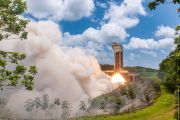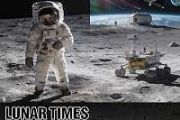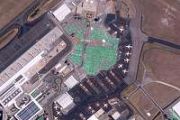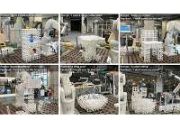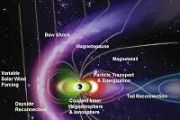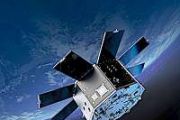
Copernical Team
China's FAST telescope reveals unprecedented details of Milky Way
 The vast space between billions of stars in the Milky Way is not empty, but filled with thin interstellar medium.
Using the Five-hundred-meter Aperture Spherical Radio Telescope (FAST), or the "China Sky Eye," Chinese scientists revealed the unprecedented details of the Galactic interstellar medium.
Led by Han Jinlin, a scientist with the National Astronomical Observatories of China,
The vast space between billions of stars in the Milky Way is not empty, but filled with thin interstellar medium.
Using the Five-hundred-meter Aperture Spherical Radio Telescope (FAST), or the "China Sky Eye," Chinese scientists revealed the unprecedented details of the Galactic interstellar medium.
Led by Han Jinlin, a scientist with the National Astronomical Observatories of China, Curved spacetime in the lab
 According to Einstein's Theory of Relativity, space and time are inextricably connected. In our Universe, whose curvature is barely measurable, the structure of this spacetime is fixed. In a laboratory experiment, researchers from Heidelberg University have succeeded in realising an effective spacetime that can be manipulated.
In their research on ultracold quantum gases, they were able to
According to Einstein's Theory of Relativity, space and time are inextricably connected. In our Universe, whose curvature is barely measurable, the structure of this spacetime is fixed. In a laboratory experiment, researchers from Heidelberg University have succeeded in realising an effective spacetime that can be manipulated.
In their research on ultracold quantum gases, they were able to Let's try that again Amapari: Sols 3677-3679
 On Wednesday, we uplinked a drill plan, to drill the target "Amapari" in the Marker Band. Coming into planning this morning, we learned that the drill was only able to penetrate 7 mm into the hard rock here, and this was not deep enough for the drill to collect sample that could be analyzed by CheMin and SAM. Fortunately, the RPs examined the workspace this morning and found a second similar are
On Wednesday, we uplinked a drill plan, to drill the target "Amapari" in the Marker Band. Coming into planning this morning, we learned that the drill was only able to penetrate 7 mm into the hard rock here, and this was not deep enough for the drill to collect sample that could be analyzed by CheMin and SAM. Fortunately, the RPs examined the workspace this morning and found a second similar are Smart Dragon 3 rocket makes maiden flight
 The Smart Dragon 3, a new solid-propellant carrier rocket, made its maiden flight on Friday afternoon, according to China Aerospace Science and Technology Corp (CASC), the country's leading space contractor.
The rocket blasted off at 2:35 pm from a ship in the Yellow Sea and launched 14 satellites into orbit during its flight, the State-owned conglomerate said in a news release.
The
The Smart Dragon 3, a new solid-propellant carrier rocket, made its maiden flight on Friday afternoon, according to China Aerospace Science and Technology Corp (CASC), the country's leading space contractor.
The rocket blasted off at 2:35 pm from a ship in the Yellow Sea and launched 14 satellites into orbit during its flight, the State-owned conglomerate said in a news release.
The After 15 Years, 1,000 Tests, Orion's Heat Shield Ready to Take the Heat
 When Artemis I launched on Wednesday, Nov. 16, NASA's new mega Moon rocket carried the Orion spacecraft?- uncrewed, for now - into orbit for the first time, and a new era of lunar exploration began. It's a big moment for NASA and the world. And, yet, one of the people whose work will be tested at the next crucial step - bringing Orion home safely - isn't nervous at all.
Jeremy Vander Kam i
When Artemis I launched on Wednesday, Nov. 16, NASA's new mega Moon rocket carried the Orion spacecraft?- uncrewed, for now - into orbit for the first time, and a new era of lunar exploration began. It's a big moment for NASA and the world. And, yet, one of the people whose work will be tested at the next crucial step - bringing Orion home safely - isn't nervous at all.
Jeremy Vander Kam i Practice makes perfect for student inventions at JPL competition
 Months of preparation led to three teams from one school taking home the top prizes at the 23rd Invention Challenge hosted by NASA's Jet Propulsion Laboratory.
After a two-year hiatus due to the pandemic, the Invention Challenge made a lively return to NASA's Jet Propulsion Laboratory in Southern California on Friday. Now in its 23rd year, the long-running tradition brings together student
Months of preparation led to three teams from one school taking home the top prizes at the 23rd Invention Challenge hosted by NASA's Jet Propulsion Laboratory.
After a two-year hiatus due to the pandemic, the Invention Challenge made a lively return to NASA's Jet Propulsion Laboratory in Southern California on Friday. Now in its 23rd year, the long-running tradition brings together student NASA capsule Orion splashes down after record-setting lunar voyage
 NASA's Orion space capsule splashed down safely in the Pacific on Sunday, completing the Artemis 1 mission - a more than 25-day journey around the Moon with an eye to returning humans there in just a few years.
After racing through the Earth's atmosphere at a speed of 25,000 miles (40,000 kilometers) per hour, the uncrewed capsule floated down to the sea with the help of three large orange
NASA's Orion space capsule splashed down safely in the Pacific on Sunday, completing the Artemis 1 mission - a more than 25-day journey around the Moon with an eye to returning humans there in just a few years.
After racing through the Earth's atmosphere at a speed of 25,000 miles (40,000 kilometers) per hour, the uncrewed capsule floated down to the sea with the help of three large orange Japanese startup launches historic Moon mission
 A Japanese startup's spacecraft was launched to the Moon on Sunday in the country's first-ever lunar mission and the first of its kind by a private company.
The launch was carried out by Elon Musk's SpaceX at Cape Canaveral in the US state of Florida after two postponements for additional pre-flight checks.
The spacecraft, produced by Tokyo-based startup ispace and carrying a UAE-built r
A Japanese startup's spacecraft was launched to the Moon on Sunday in the country's first-ever lunar mission and the first of its kind by a private company.
The launch was carried out by Elon Musk's SpaceX at Cape Canaveral in the US state of Florida after two postponements for additional pre-flight checks.
The spacecraft, produced by Tokyo-based startup ispace and carrying a UAE-built r NASA's Orion capsule blazes home from test flight to moon
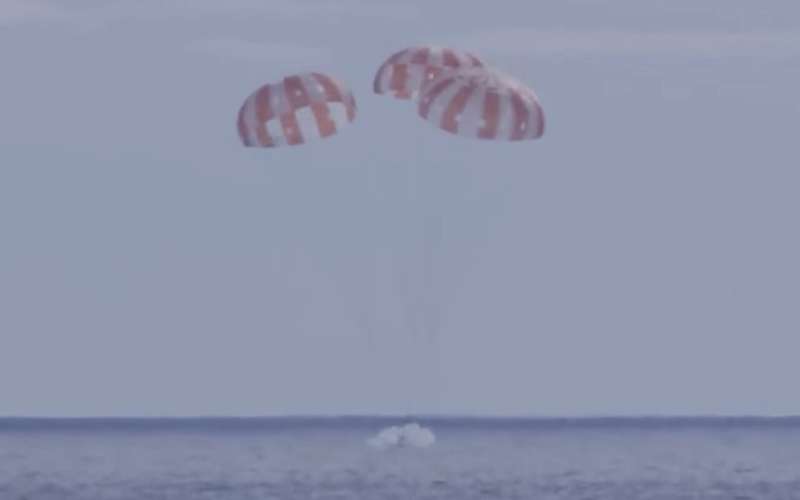
NASA's Orion capsule made a blisteringly fast return from the moon Sunday, parachuting into the Pacific off Mexico to conclude a test flight that should clear the way for astronauts on the next lunar flyby.
Orion splashes down after record-setting voyage around the Moon
 NASA's Orion space capsule splashed down safely in the Pacific on Sunday, completing the Artemis 1 mission -- a more than 25-day journey around the Moon with an eye to returning humans there in just a few years. After racing through the Earth's atmosphere at a speed of 40,000 kilometers per hour (25,000 mph), the uncrewed capsule floated down to the sea with the help of three large red and white parachutes, as seen on NASA TV.
NASA's Orion space capsule splashed down safely in the Pacific on Sunday, completing the Artemis 1 mission -- a more than 25-day journey around the Moon with an eye to returning humans there in just a few years. After racing through the Earth's atmosphere at a speed of 40,000 kilometers per hour (25,000 mph), the uncrewed capsule floated down to the sea with the help of three large red and white parachutes, as seen on NASA TV. 














